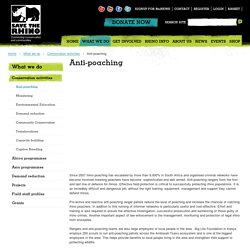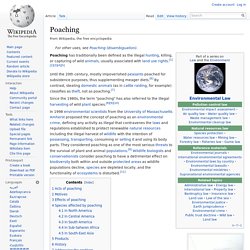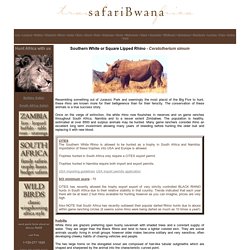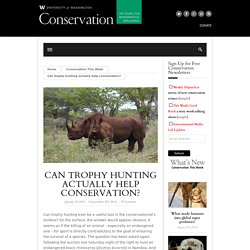

Anti-Poaching - Rhino Anti-poaching - Save the Rhino. Since 2007 rhino poaching has escalated by more than 9,000% in South Africa and organised criminal networks have become involved meaning poachers have become sophisticated and well armed.

Anti-poaching rangers form the first and last line of defence for rhinos. Effective field protection is critical to successfully protecting rhino populations. It is an incredibly difficult and dangerous job, without the right training, equipment, management and support they cannot defend rhinos. Pro-active and reactive anti-poaching ranger patrols reduce the level of poaching and increase the chances of catching rhino poachers. In addition to this running of informer networks is particularly useful and cost-effective.
Rangers and anti-poaching teams are also large employers of local people in the area. These rangers need support by providing equipment to enable them to do their jobs and training. Poaching. Poaching has traditionally been defined as the illegal hunting, killing, or capturing of wild animals, usually associated with land use rights.[1][2][3][4][5] Until the 20th century, mostly impoverished peasants poached for subsistence purposes, thus supplementing meager diets.[6] By contrast, stealing domestic animals (as in cattle raiding, for example) classifies as theft, not as poaching.[7] Since the 1980s, the term "poaching" has also referred to the illegal harvesting of wild plant species.[8][9][10] Acts of poaching[edit] Violations of hunting laws and regulations concerning wildlife management, local or international wildlife conservation schemes constitute wildlife crimes that are typically punishable.[12][13] The following violations and offenses are considered acts of poaching: Motives[edit]

African animals hunting facts and tips - Rhino hunting. Southern White or Square Lipped Rhino - Ceratotherium simum Resembling something out of Jurassic Park and seemingly the most placid of the Big Five to hunt, these rhino are known more for their belligerence than for their ferocity.

The conservation of these animals is a true success story. Once on the verge of extinction, the white rhino now flourishes in reserves and on game ranches throughout South Africa, Namibia and to a lesser extent Zimbabwe. The population is healthy, estimated at over 8500 and surplus animals may be hunted. Many game ranchers consider rhino an excellent long term investment allowing many years of breeding before hunting the older bull and replacing it with new blood. habits White rhino are grazers preferring open bushy savannah with shaded trees and a constant supply of water.
The two large horns on the elongated snout are composed of hair-like tubular outgrowths which are shaped and sharpened by the animal into the characteristic curved point. Poaching. Poaching has traditionally been defined as the illegal hunting, killing, or capturing of wild animals, usually associated with land use rights.[1][2][3][4][5] Until the 20th century, mostly impoverished peasants poached for subsistence purposes, thus supplementing meager diets.[6] By contrast, stealing domestic animals (as in cattle raiding, for example) classifies as theft, not as poaching.[7] Since the 1980s, the term "poaching" has also referred to the illegal harvesting of wild plant species.[8][9][10] Acts of poaching[edit] Violations of hunting laws and regulations concerning wildlife management, local or international wildlife conservation schemes constitute wildlife crimes that are typically punishable.[12][13] The following violations and offenses are considered acts of poaching: Motives[edit] In African rural areas, the key motives for poaching are the lack of employment opportunities and a limited potential for agriculture and livestock production.

Can trophy hunting actually help conservation? Can trophy hunting ever be a useful tool in the conservationist’s toolbox?

On the surface, the answer would appear obvious. It seems as if the killing of an animal – especially an endangered one – for sport is directly contradictory to the goal of ensuring the survival of a species. The question has been asked again following the auction last Saturday night of the right to hunt an endangered black rhinoceros (Diceros bicornis) in Namibia. And the answer, as usual, is more complicated. The permit was sold for $350,000, well above the previous high bid for a permit in that country, $223,000. And it’s not just rhinos. The issues here are complex and highly politicized. In 2006, researcher Peter A. Lindsey’s team also discovered that hunters were more sensitive to conservation concerns than was perhaps expected.
Is there such evidence? Even so, some have expressed concern regarding what the larger message of sanctioned trophy hunts might be.